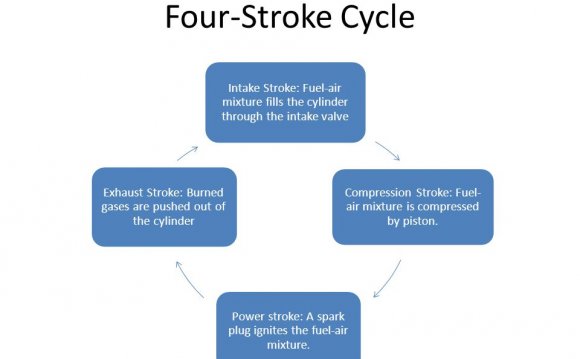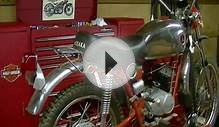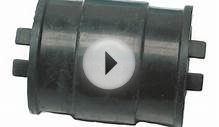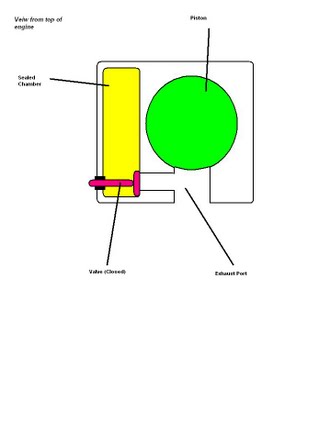
For the forty years following the first flight of the Wright brothers, airplanes used internal combustion engines to turn propellers to generate thrust. Today, most general aviation or private airplanes are still powered by propellers and internal combustion engines, much like your automobile engine. On this page we will discuss the fundamentals of the internal combustion engine using the Wright brothers' 1903 engine, shown in the figure, as an example.
The brothers' design is very simple by today's standards, so it is a good engine for students to study to learn the fundamentals of engine operation. This type of internal combustion engine is called a four-stroke engine because there are four movements (strokes) of the piston before the entire engine firing sequence is repeated. In the figure, we have colored the fuel/air intake system red, the electrical system green, and the exhaust system blue. We also represent the fuel/air mixture and the exhaust gases by small colored balls to show how these gases move through the engine. Since we will be referring to the movement of various engine parts, here is a figure showing the names of the parts:
Mechanical Operation
The engine cycle begins at Stage 1 with the intake stroke as the piston is pulled towards the crankshaft (to the left in the figure). The intake valve is open, and fuel and air are drawn past the valve and into the combustion chamber and cylinder from the intake manifold located on top of the combustion chamber. The exhaust valve is closed and the electrical contact switch is open. The fuel/air mixture is at a relatively low pressure (near atmospheric) and is colored blue in this figure. At the end of the intake stroke, Stage 2, the piston is located at the far left and begins to move back towards the right. The cylinder and combustion chamber are full of the low pressure fuel/air mixture and, as the piston begins to move to the right, the intake valve closes to begin the compression stroke.
RELATED VIDEO




 The two-stroke power valve system is an improvement to a conventional two-stroke engine that gives a high power output over a wider RPM range.
The two-stroke power valve system is an improvement to a conventional two-stroke engine that gives a high power output over a wider RPM range.







